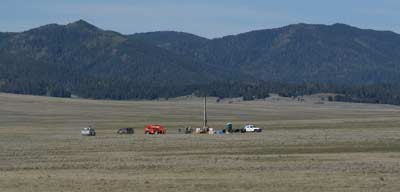Two Northern Arizona University researchers have dug deep into the past to determine what the future may hold for water availability in the southwestern United States.
Scott Anderson, paleoecology and environmental sciences professor in the School of Earth Sciences and Environmental Sustainability, and Susan J. Smith, senior research specialist at Bilby Research Center, recently published their team’s study, “Extended Megadroughts in the Southwestern United States During Pleistocene Interglacials,” in Nature, the prestigious international journal of science.
| Listen to Scott Anderson discuss his research in a recent interview with KNAU |
While the historical record they examined—preserved in sediment cores removed from Valle Caldera in New Mexico—provided insight into the climate and environment 250,000 to 500,000 years ago, the findings may have implications for future resource management in the region.
“We are trending toward drier, warmer conditions,” Anderson said. “In the record, under natural conditions, the monsoons failed, and that period lasted hundreds of years. Natural conditions could be compounded by the effects of human-caused climate change, perhaps flipping us into a different climate state, with a greater likelihood of seeing a ‘megadrought’ in the region that will could last for centuries.”
Anderson said droughts also cause stress in trees, leaving them prone to infestation and forest fires. “We are looking at diminished availability of water, and likelihood of major fires like last year’s Schultz Fire. Nature is going to do what it does, but humans are making it worse with climate change.”



